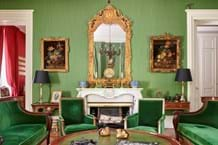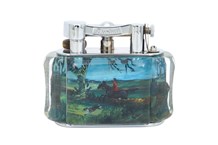Fine art imports rose most sharply. Paintings, drawings, prints and sculpture to a value of £1027m were brought into the UK, 64 per cent up on the previous year. Imports of antiques were up 20 per cent to £289m.
The dramatic upsurge in import activity reverses a trend which has seen a growing gap between the value of exports and imports through the 1990s. This trade gap has been generally attributed to the imposition of 2.5 per cent VAT on imported works of art in 1995.
In June this year the rate of import VAT will automatically increase to 5 per cent unless the European Commission has a sudden change of heart and yields to pressure from the British Art Market Federation, which may go some way to explaining last year’s figures.
It would not be unreasonable to attribute at least part of the 1998 import surge to people taking the opportunity to bring in works of art in advance of the rate increase.
It may be significant that the last time the art trade gap narrowed significantly was in 1994 before the introduction of VAT at 2.5 per cent.
However, the strength of the pound has also made overseas markets look attractive. It is demonstrably true that London art dealers have been buying strongly abroad, particularly in the USA and imports from that country were up by 48 per cent.
As with all statistics, it is important not to read too much into individual entries, but interesting to note several new countries among the UK’s major trading partners, with significant exports of pictures to Saudi Arabia and the Bahamas and of antiques to Russia. None of these three featured in last year’s listings, but a single large consignment can have a marked effect on the figures.
On the import side, antiques from China made a significant entry and there was a massive rise in the value of pictures from Australia, while Brazil and Canada also featured strongly, and trade with Japan showed signs of significant revival.
Art imports matched exports last year
UK: THE VALUE of art and antiques imported into Britain from outside the EU last year came close to parity with exports for the first time since 1973, when the UK was last a net importer in this field. According to Customs & Excise records for 1998, exports of art and antiques rose slightly to £1318m, but imports were up by 52 per cent at £1316m.




